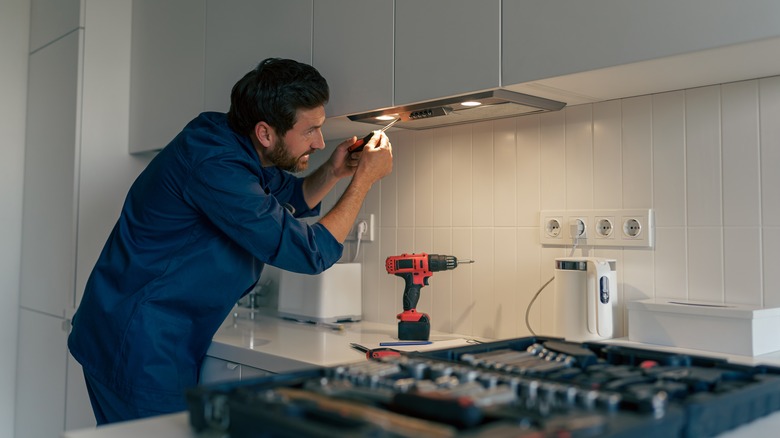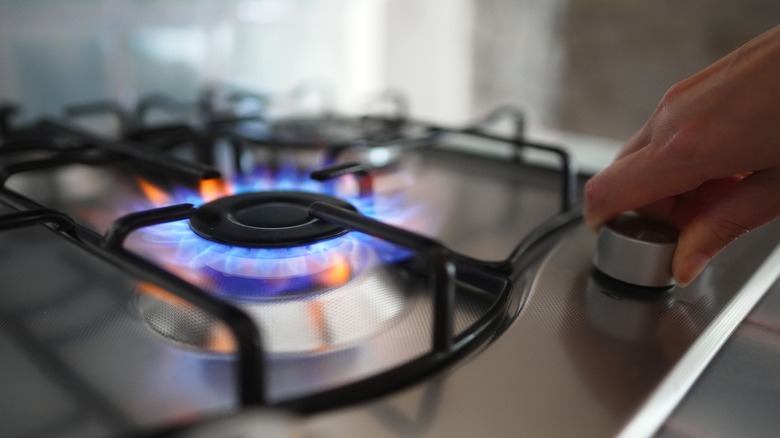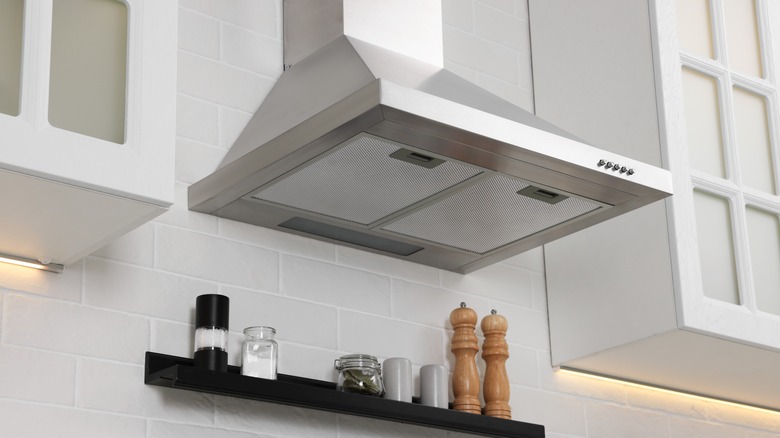The Safety Reason You Should Always Use Your Gas Stove's Exhaust Fan
The kitchen can be an incredibly magical place. Whipping up delicious dishes with friends and family is a great way to satisfy your rumbling stomach while simultaneously satiating your need for socialization. But as your meal prep process becomes more involved, the number of risks you run also increases.
One of the biggest sources of potential kitchen catastrophes is the gas stove. The risk of sustaining a burn on a gas stove's open flame is obvious, but one of the mistakes everyone makes when cooking on a gas stove top has nothing to do with being burned. Failing to turn on the exhaust fan when you're cooking on a gas stove will result in unsafe levels of several dangerous gasses in your kitchen — namely, carbon monoxide, carbon dioxide, and nitrogen dioxide. Fortunately, scientific studies have suggested that many of these problems can be tempered by consistently using your exhaust fan.
Indoor air pollution from your gas stove
There are myriad reasons top chefs prefer gas stove tops. The tool allows you to cook with a massive amount of control over heat levels and distribution. However, with these benefits comes risks, the aforementioned emissions chief among them.
Carbon monoxide has no identifying characteristics like smell or color. It is a dangerous contaminant that kills several hundred people on an annual basis. Making sure that your gas stove has a properly functioning and well-maintained vent system is the best way to keep you safe from this silent and scentless killer. Carbon dioxide is equally invisible, but a gas stove causing dangerous levels of carbon dioxide to build up indoors is unlikely.
The EPA has put restrictions in place regarding how much nitrogen dioxide air pollution is allowable outdoors, but the same stipulations do not exist for nitrogen dioxide produced inside by your gas stove. A synopsis of 41 scientific studies published in the International Journal of Epidemiology tells us that children raised in a home with a gas stove are at an increased risk of asthma.
How to vent your gas stove
Before you get rid of your gas stove, there are a number of different precautions you can take to keep your kitchen safe. You should be turning on the exhaust fan each time you turn on a burner, regardless of the cooking project you're working on, and you need to be consistently checking your fan's filtration system to see if it needs to be cleaned or even changed out. It's also recommended that you stick to your gas stove's back burners, which allows the hazardous gasses more time and space to dissipate.
Most fans found in the average person's kitchen only recirculate the stove emissions. This is undeniably better than no ventilation, but ensuring that these toxic gasses are fully dealt with requires a range hood that is installed at an appropriate level above the stove. The recommendation from many manufacturers, like KitchenAid, is 24 to 30 inches. Many home cooks find themselves unable to install such a large and pricey fixture due to both finances and logistics and should, at the very least, make sure to use their gas stove's exhaust fan regularly.


